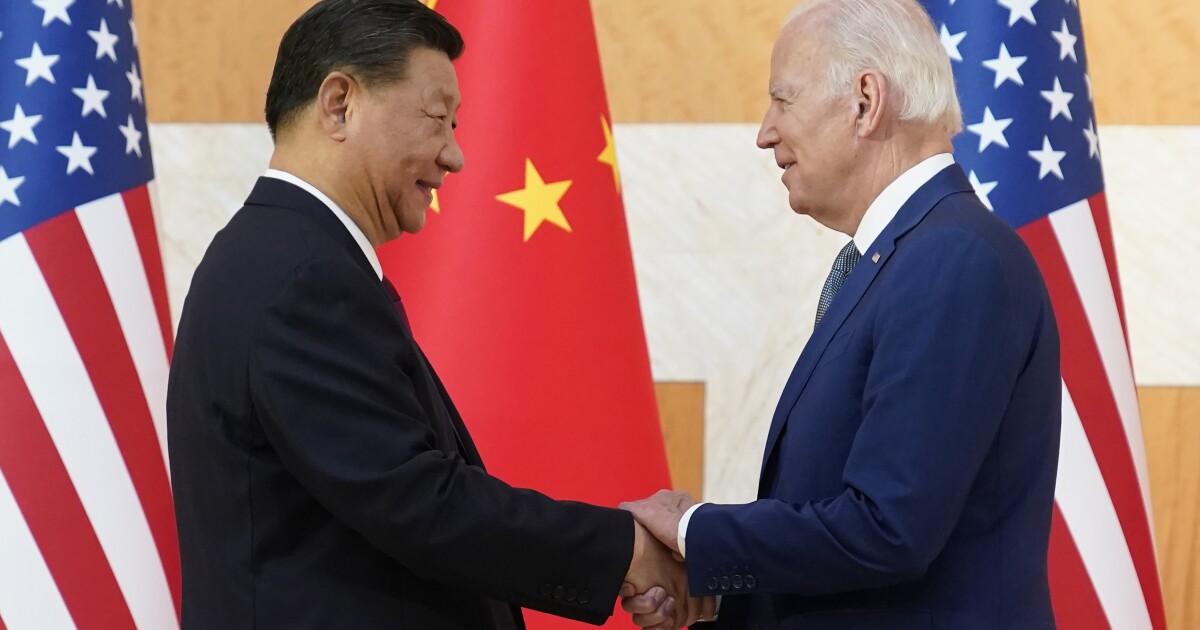

Despite the continuation of a major conflict in Europe and a burgeoning one in the Middle East, 2023 was the “most transformative year” for the U.S. military‘s presence in the Pacific, according to a senior Pentagon official.
The Pentagon’s long-term focus is on China, which the department believes is the only country with the will and ability to reshape the international order in its favor, even as the United States continues to aid Ukraine and Israel in separate conflicts across the globe.
A YEAR AFTER GRINER’S RELEASE FROM RUSSIA, WHELAN FAMILY PLEADS WITH BIDEN: ‘BRING PAUL HOME’
“2023 has been the most transformative year in a generation for U.S. force posture in the Indo-Pacific,” Ely Ratner, assistant defense secretary for Indo-Pacific security affairs, told the Defense Writers Group earlier this month.
Defense Secretary Lloyd Austin’s travel across the Pacific over the last year has been marked by a series of victories, he said. The department ushered in new force posture initiatives in Northern Australia in January 2023, as it did with Japan a couple of months later, which included the announcement of a stand-up of a Marine Littoral Regiment in Okinawa. He also got Manila to agree to four more enhanced Defense Cooperation Agreement sites in the Philippines.
“Within a 50-day period, the secretary met face-to-face with all five of our treaty allies in the Indo-Pacific region, Thailand, the Philippines, Australia, Japan, and South Korea,” Ratner said. “These are remarkable engagements with our allies during a time [when] there are other things going on in the world.”
Austin visited New Delhi and signed a new defense industrial base cooperation road map. He also became the first defense secretary to travel to Papua New Guinea, where he signed a new Defense Cooperation Agreement.
“These are profoundly significant developments in the region in terms of the degree to which allies and partners are working together and with one another and in different constellations we have seen, with the Philippines increasing its cooperation with Australia, increasing its cooperation with Japan, and looking for many multilateral cooperation there in Japan and including with the United States,” Ratner added.
The Chinese military cut off communications with its U.S. counterparts following former House Speaker Nancy Pelosi’s (D-CA) trip to Taiwan in August 2022. That silence continued until President Joe Biden and Chinese leader Xi Jinping agreed to restart communications during their October meeting in San Francisco, California.
CLICK HERE TO READ MORE FROM THE WASHINGTON EXAMINER
“We are currently in the process of discussing with the PRC Defense Department about what that is going to look like in the months and years ahead,” Ratner said, noting this will comprise “a combination of what will be meetings, calls, dialogues, and engagements over the next 12 months.”
In October, Ratner said China’s military had increased the number of unsafe or reckless maneuvers near U.S. aircraft and naval vessels in the Pacific region in recent years. This month, he declined to say whether the U.S. military had seen a decrease in these incidents since the Biden-Xi meeting, though he added, “The amount of these risky and coercive intercepts that we’ve seen over the last couple of years is more than we’ve seen in the decades preceding it. So, the overall number of these events has increased significantly.”





